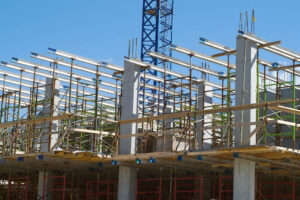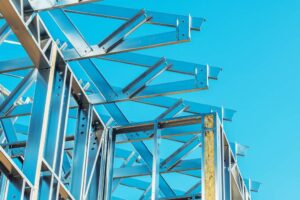The construction industry has experienced a significant transformation in recent years with the rise of prefab metal buildings. These innovative structures offer numerous advantages over traditional construction methods, from increased efficiency and cost-effectiveness to sustainability and flexibility. Prefab metal buildings have become a popular choice for a wide range of applications, including commercial, industrial, and residential projects.

In this article, we will delve into the world of prefab metal buildings, exploring their benefits, design versatility, environmental impact, and the future of this game-changing construction trend.
- The Advantages of Prefab Metal Buildings: Prefabricated metal buildings offer several advantages that have contributed to their growing popularity. Firstly, these structures are known for their superior strength and durability. Made from high-quality steel, prefab metal buildings can withstand harsh weather conditions, including high winds, heavy snow loads, and seismic activity. They provide a secure and reliable solution for various applications, such as warehouses, workshops, and storage facilities.
Secondly, prefab metal buildings are highly cost-effective. The use of standardized components and streamlined manufacturing processes reduces construction time and labor costs significantly. Additionally, the durability of metal minimizes long-term maintenance expenses, making these buildings an economical choice for both short and long-term investments.
Moreover, prefab metal buildings offer exceptional design flexibility. Advances in manufacturing technology have made it possible to create customized structures tailored to specific needs and preferences. From clear-span interiors to various cladding options, these buildings can be easily modified and expanded to accommodate evolving requirements.
- Sustainability and Environmental Impact: Prefab metal buildings have gained recognition for their sustainability and positive environmental impact. Steel is one of the most recycled materials globally, with an average recycled content of 90%. This means that prefab metal buildings are not only constructed using eco-friendly materials but also contribute to reducing waste and conserving natural resources.
Furthermore, the energy efficiency of prefab metal buildings is noteworthy. Advanced insulation materials, cool roofing systems, and energy-efficient doors and windows help regulate temperature and reduce energy consumption. As a result, these buildings have lower heating and cooling costs, making them environmentally friendly and cost-effective in the long run.
- Applications and Industries: Prefab metal buildings find applications in various industries, showcasing their versatility and adaptability. In the commercial sector, they are commonly used as retail stores, offices, restaurants, and shopping centers. Their customizable designs allow for unique aesthetics that align with brand identities and attract customers.
Industrial applications include manufacturing facilities, warehouses, and distribution centers. The clear-span interiors of prefab metal buildings provide ample space for heavy machinery, storage, and logistics operations. Moreover, their rapid construction time ensures minimal downtime and quick occupancy, leading to increased productivity.
In the residential sector, prefab metal buildings are gaining popularity as modern and sustainable housing solutions. These structures can be designed to match any architectural style, from contemporary to rustic, offering homeowners a combination of aesthetics, durability, and energy efficiency.
- The Future of Prefab Metal Buildings: As the construction industry continues to evolve, prefab metal buildings are expected to play an increasingly significant role. Advances in design software, manufacturing techniques, and sustainable materials will further enhance the efficiency and versatility of these structures.
Moreover, the integration of smart technology and renewable energy systems will make prefab metal buildings even more sustainable and energy-efficient. Features such as solar panels, rainwater harvesting systems, and intelligent automation will contribute to reducing the environmental impact while improving the comfort and functionality of these buildings.

Additionally, the demand for affordable housing and rapid construction solutions will drive the growth of prefab metal buildings in both urban and rural areas. These structures can be assembled quickly and efficiently, addressing the pressing need for housing in various regions.
Prefab metal buildings have revolutionized the construction industry by offering enhanced efficiency, cost-effectiveness, and sustainability. Their superior strength, design flexibility, and minimal environmental impact make them an attractive choice for a wide range of applications. As technology advances and the demand for sustainable and efficient construction solutions increases, prefab metal buildings will continue to shape the future of the industry. With their ability to adapt to diverse needs, these structures are set to become a cornerstone of modern construction, providing durable, customizable, and environmentally friendly solutions for years to come.
Learn more at Wiki as well.